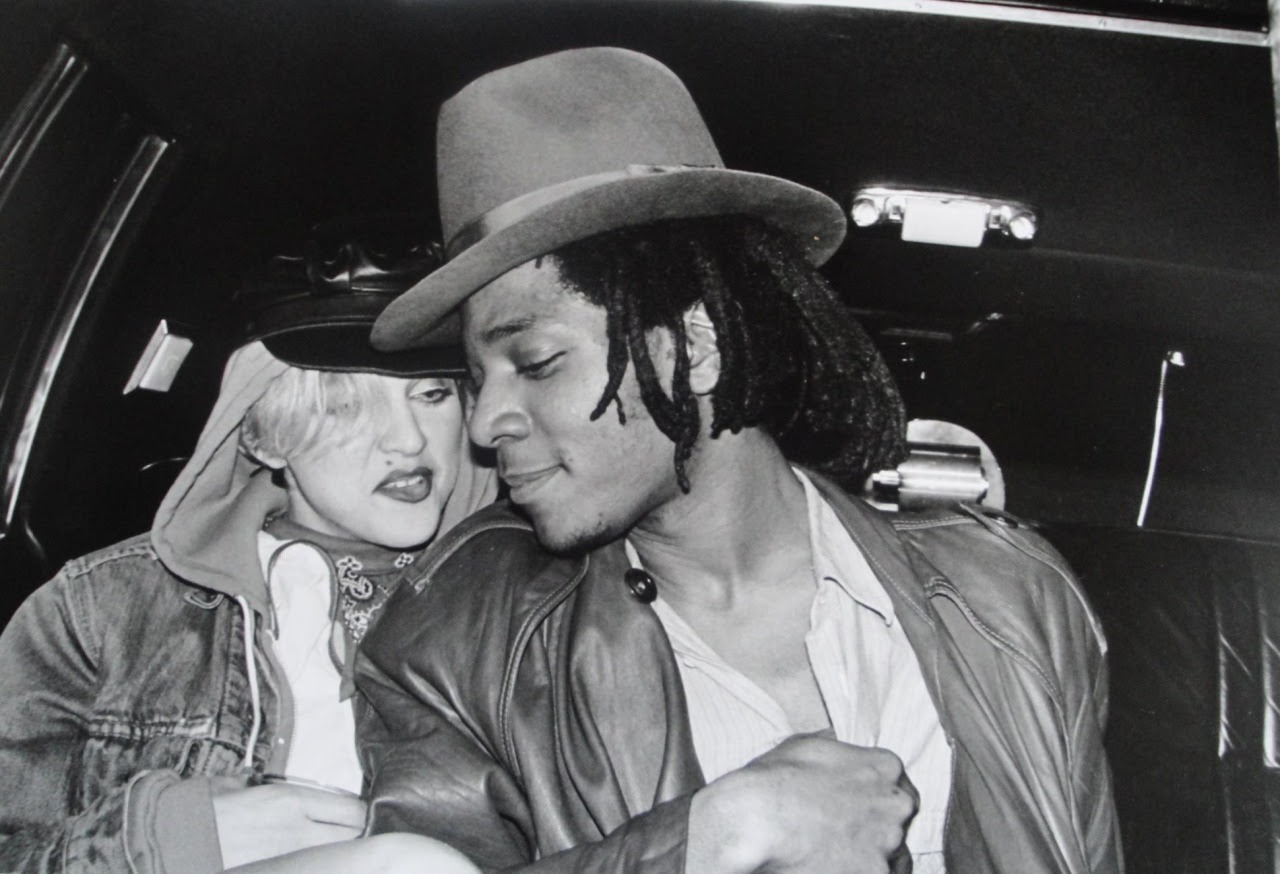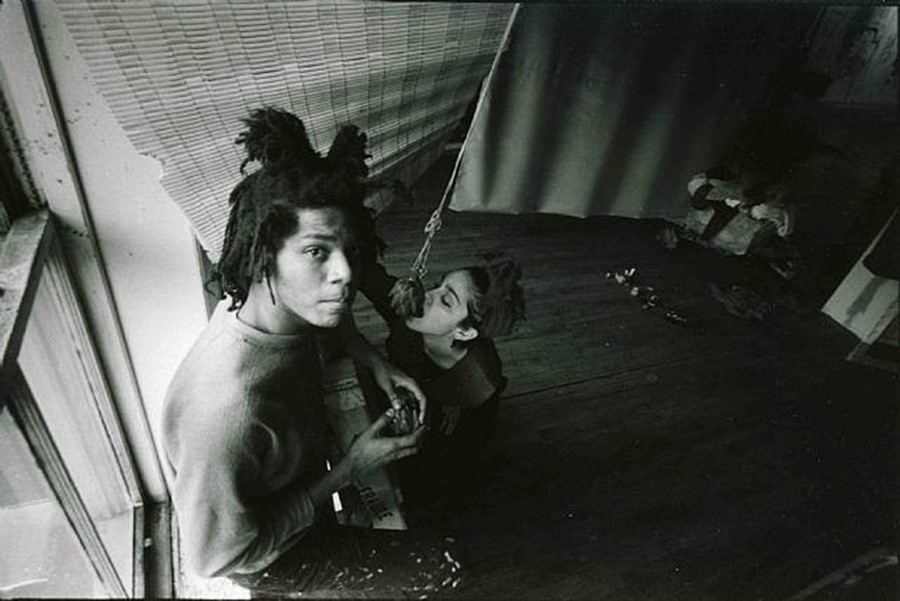The 1980s in New York City was a decade defined by cultural rebellion, creative cross-pollination, and artistic breakthroughs. It was a time when art, music, and fashion exploded onto the streets of SoHo, the East Village, and downtown clubs like The Mudd Club, Danceteria, and CBGB. Two of the most iconic figures from that era, Jean-Michel Basquiat and Madonna, were more than just major players—they were catalysts in shaping the decade’s aesthetic. In real life, their brief romantic relationship in the early 1980s has become something of legend. But what if they had gone further? What if Basquiat had married Madonna?
Imagining a union between Jean-Michel Basquiat and Madonna not only adds a romantic layer to art history but also opens up fascinating questions about influence, fame, legacy, and the collaborative spirit of 1980s New York. Their connection—though fleeting—was deeply symbolic of the time: two young, ambitious outsiders disrupting their respective fields, intersecting at the heart of a cultural revolution.
A Collision of Fire: How Madonna & Basquiat Met
Jean-Michel Basquiat and Madonna met in 1982, introduced by artist and graffiti writer Fab 5 Freddy. At the time, Madonna was an aspiring singer hustling her way through the club scene, and Basquiat was already making waves in the art world, having transitioned from his days tagging SAMO on SoHo walls to selling paintings for thousands. Their meeting wasn’t just happenstance—it was the natural convergence of two orbiting stars in a tight, vibrant universe of downtown creatives.
Basquiat, known for his frenetic energy and cryptic neo-expressionist paintings, was drawn to Madonna’s charisma and determination. Madonna, equally intrigued by Basquiat’s raw genius and mystique, found a kindred spirit in his rebelliousness. For a time, they were inseparable—living, creating, and partying in a city on fire with possibility.

Art Meets Pop: A Hypothetical Marriage
Had Basquiat and Madonna married, their union would have been one of the most dynamic cultural fusions of the era. Not merely a celebrity power couple, they represented two powerful but very different artistic impulses: Basquiat was the voice of the marginalized, fusing African-American history, jazz, street culture, and social critique into layered visual tapestries; Madonna was the master of pop reinvention, unafraid to provoke, seduce, and challenge social norms through music and image.
Their marriage would have symbolized the collapsing of artistic boundaries between “high” and “low” art. Basquiat, though celebrated, still struggled with being taken seriously by the white-dominated art world. Madonna, on the other hand, was a woman dominating the pop charts while often being dismissed by critics. Together, they might have amplified each other’s credibility—he elevating her artistic edge, she softening and mainstreaming his intensity.
It’s easy to imagine Basquiat designing backdrops or visuals for Madonna’s performances, bringing his raw aesthetic to the polished world of pop music. Perhaps Madonna might have influenced Basquiat to experiment more with performance or sound in his own work. Their respective fame could have propelled them both into new creative territories, inspiring a generation of multi-disciplinary artists long before the likes of Kanye West or Lady Gaga blurred the lines between music, fashion, and fine art.

The 1980s: Their Shared Stage
In real life, both Basquiat and Madonna were emblematic of New York’s underground-to-mainstream trajectory in the 1980s. The decade was defined by contradictions—decadence and decay, glamour and grit, capitalism and rebellion. Their lives mirrored these tensions.
Basquiat was the quintessential outsider-turned-art-world-darling. Emerging from the graffiti culture of the late '70s, he used his paintings to dissect class, race, and power dynamics with poetic rage. He walked in both the underground and elite circles, mentored by Andy Warhol, collected by celebrities, but still haunted by exploitation and addiction.
Madonna, meanwhile, exploded into superstardom by harnessing the era’s appetite for image and controversy. Her brand of feminism—bold, sexual, and unapologetically ambitious—challenged traditional expectations of women in entertainment. She was an icon for the MTV generation, but beneath the spectacle was a strategic, fearless artist redefining what pop could mean.
In a marriage, their influence would have rippled even more powerfully through the decade. As a couple, they could have become the quintessential symbol of '80s reinvention—a biracial, cross-disciplinary duo who embodied everything the era aspired to be: edgy, artistic, glamorous, and uncontainable.
Influence and Tension
Of course, a marriage between two such strong personalities would not have been without its challenges. Basquiat struggled with fame, substance abuse, and a deep mistrust of the systems that celebrated him. Madonna thrived in the spotlight and built her career on controlling her image and brand. It’s easy to imagine how their divergent coping mechanisms might have clashed. Where she might have embraced public scrutiny, he recoiled. Where she sought to dominate, he often self-sabotaged.

But perhaps their differences would have also offered balance. Madonna might have grounded Basquiat, giving him structure in a world that often overwhelmed him. Basquiat might have challenged Madonna to dig deeper, to engage more directly with the socio-political undercurrents of her time. Their collaborations—imagined or real—might have forged a new artistic genre altogether: visceral, visual, and unapologetically radical.
Legacy Rewritten
In our real timeline, Basquiat tragically died of a heroin overdose in 1988 at the age of 27. Madonna, meanwhile, continued to evolve, becoming one of the most influential artists in pop history. But had they married—had they somehow weathered the storm of fame, addiction, and ambition—it’s tempting to consider how their legacy might look today.
Would Basquiat have lived longer, supported by a partner who understood both art and media? Would Madonna’s work have taken on new dimensions, infused with Basquiat’s raw, symbolic energy? Could they have formed an artistic dynasty, mentoring younger creatives and redefining the boundaries of modern art and pop?
While the facts remain unchanged, the fantasy lingers. In imagining Basquiat and Madonna as a married couple, we explore more than a romantic possibility—we envision an alternative history of cultural fusion, one where love and art ignited something bigger than either could alone.
Basquiat and Madonna’s real-life relationship may have been brief, but it reflected the electric pulse of a city and a generation. They were both trailblazers—black and white, male and female, painter and pop star—living on the edge of genius and self-destruction. A marriage between them, though fictional, lets us dream of a deeper collaboration, a union of two uncompromising spirits whose love might have been as groundbreaking as their art.
In the end, maybe they didn’t need to be married to change the world. They already did—each in their own way. But imagining their combined influence only adds to the legend of two icons who helped define the audacious, beautiful chaos of 1980s New York. Discover authentic Basquiat art for sale or contact our galleries via info@guyhepner.com to sell Basquiat prints.

